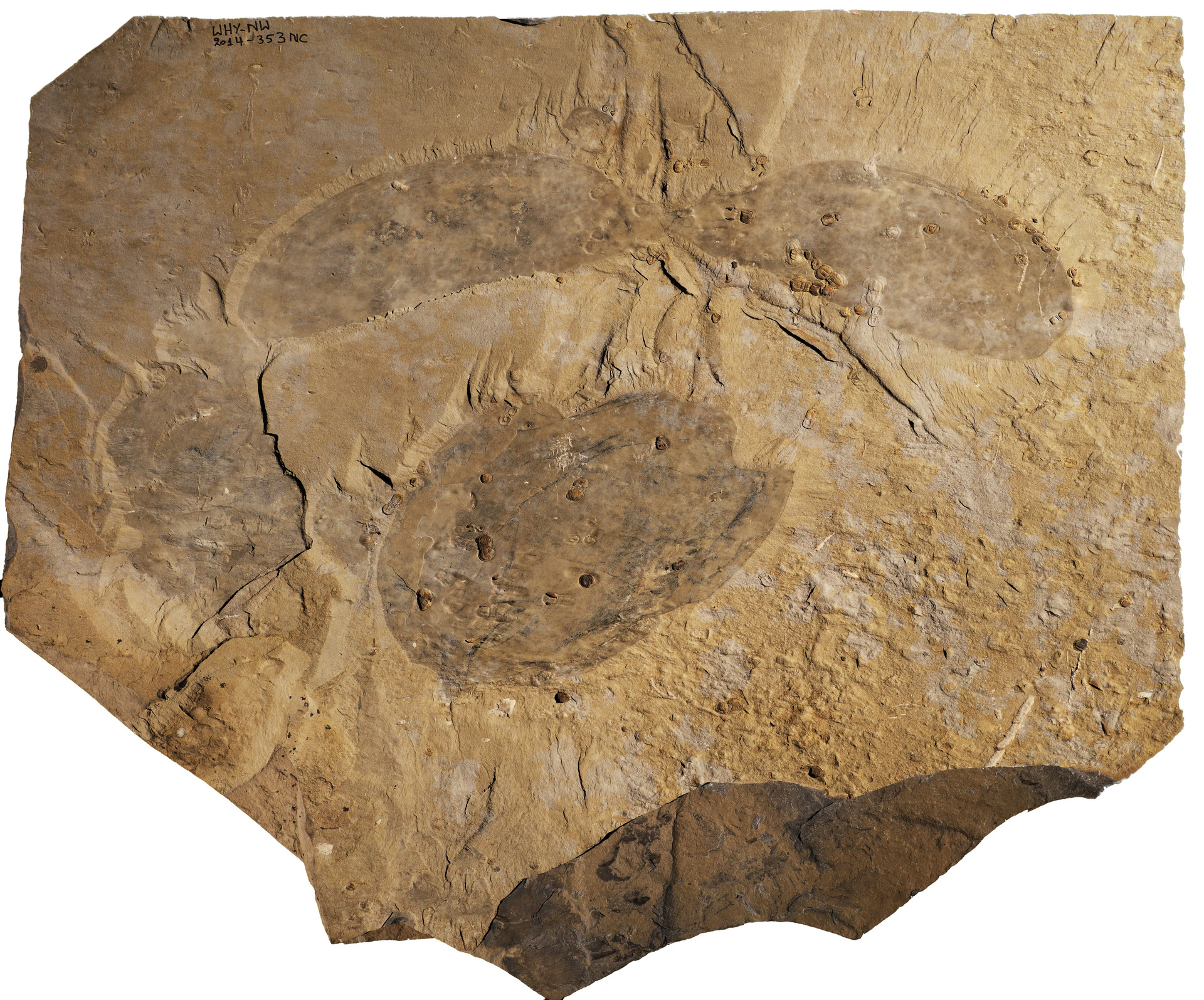Paleontologists at the Royal Ontario Museum (Canada) have discovered the remains of a new species of marine animal that lived on Earth about half a billion years ago.
The fossils were found near Marble Canyon in the northern part of Kootenay National Park in the Canadian Rockies.
This was reported in the Royal Society Open Science journal.
Scientists have established that the discovered new species belongs to the group of primitive arthropods - radio dons.
These animals were predators and lived in the oceans during the Cambrian period (about 500 million years ago -
RT
).
A team of scientists from the Royal Ontario Museum examines a fossil plate
© Jean-Bernard Caron, Royal Ontario Museum
The researchers named their find Titanokorys gainesi.
They assume that the length of the predator was about half a meter.
And compared to most of the marine animals that lived at the time, which were barely the size of a little finger, he was a giant.
“The dimensions of this creature are amazing.
It can be classified as one of the largest discovered animals of the Cambrian period, ”said Jean-Bernard Caron, curator of invertebrate paleontology at the Royal Ontario Museum.
According to scientists, Titanokorys may have looked like all radio dons.
It had compound eyes, a toothed mouth, several clawed appendages under its head to capture prey, and fins along its torso.
“Titanokorys belongs to the family of radio donts called Hurdiyids.
They were distinguished by an incredibly long head, which was covered with a three-part carapace of a wide variety of shapes.
The Titanokorys' head in relation to the body was so long that the animal was actually nothing more than a floating head, ”added co-author of the study, PhD student in the Department of Ecology and Evolutionary Biology at the University of Toronto, Joe Moisyuk.
Predator fossil Titanokorys gainesi
© Jean-Bernard Caron, Royal Ontario Museum
Paleontologists also believe that Titanokorys may have influenced the ecosystem of the seabed while hunting small marine animals.
“These mysterious animals have certainly had a great impact on the ecosystems of the Cambrian seabed. Their forelimbs resembled many folded rakes and had to be very efficient at delivering whatever they grabbed with their tiny spines into their mouths. The huge dorsal carapace may have worked like a plow, ”said Jean-Bernard Caron.

